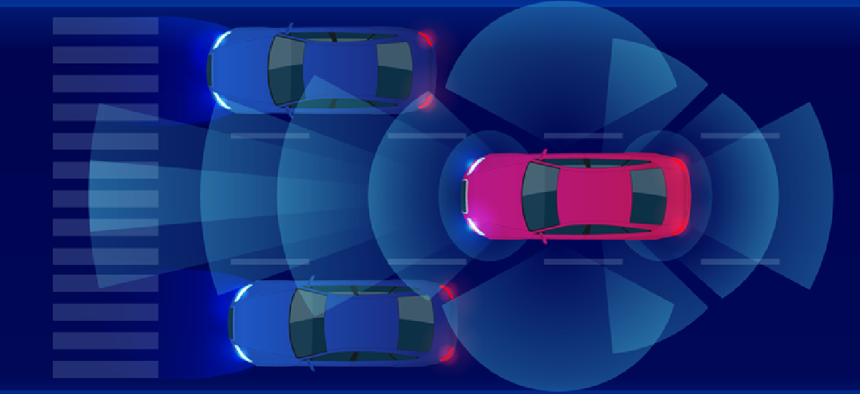DOT floats options for connected vehicle communications


Connecting state and local government leaders
The Department of Transportation is seeking comments on how recent technology developments might affect the use of dedicated short-range communications.
As cities, vehicle manufacturers and technology providers have experimented with connected vehicles, they have generally used a two-way wireless capability for medium- to short-range transmissions. In a Federal Register notice, the Department of Transportation is seeking comments on how technology advances might affect the deployment of dedicated short-range communications for connected-vehicle transmissions.
These V2X communications -- which include vehicle-to-vehicle, vehicle-to-infrastructure and vehicle-to-pedestrian -- transmit in-vehicle sensor data on location, speed and acceleration several times per second. That data is sent to other DSRC-enabled vehicles and devices to help prevent collisions and make automated and autonomous driving possible.
State and local governments have embarked on a number of connected vehicle pilots that use DSRC, including a program in Denver that put DSRC-enabled roadside units on the 400 acres along I-70 connecting the city to Denver International Airport. A fiber connection transmits the data from the RSUs to the traffic management center, which determines if any alerts need to be sent to the driver, and back to the vehicle in less than one second. Columbus, Ohio, which won the DOT Smart City Challenge, is also using DSRC units along the roadside and in vehicles to collect data for real-time decision-making and long-term planning.
General Motors has installed DSRC-based V2X technology in some of its Cadillacs, and Toyota announced it would offer a V2V option on certain models starting in 2021, with the aim of adoption across most of its lineup by the mid-2020s. By the end of 2018, DOT said it expects there will be more than 18,000 vehicles with DSRC-based V2X communications and more than 1,000 infrastructure V2X devices installed at intersections and along roadways in 25 states.
However, advances in the technologies required for V2X have raised questions about whether there might be an alternative to DSRC.
DOT is asking for comments on recent V2X developments, specifically Cellular-V2X and 5G communications. It also wants to hear from stakeholders whether the spectrum framework for DSRC should be revised to allow for other technologies and whether its focus on DSRC is consistent with its position to remain tech-neutral and support transportation innovation.
Comments are due 30 days from publication in the Federal Register.





